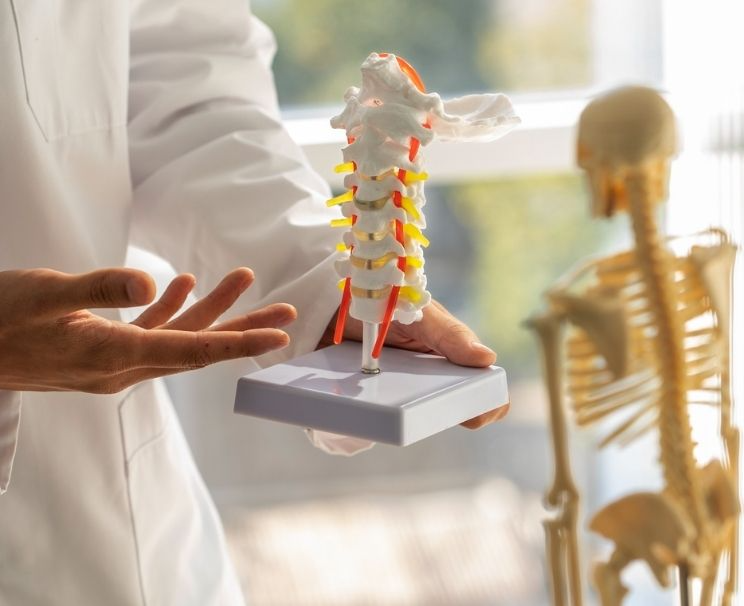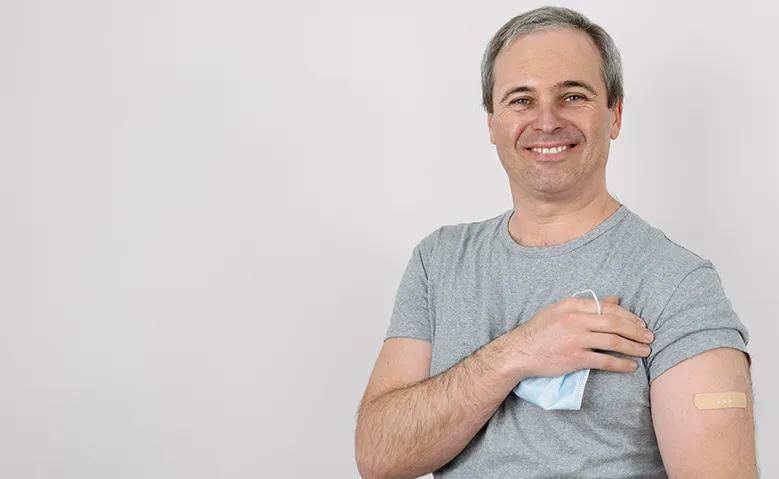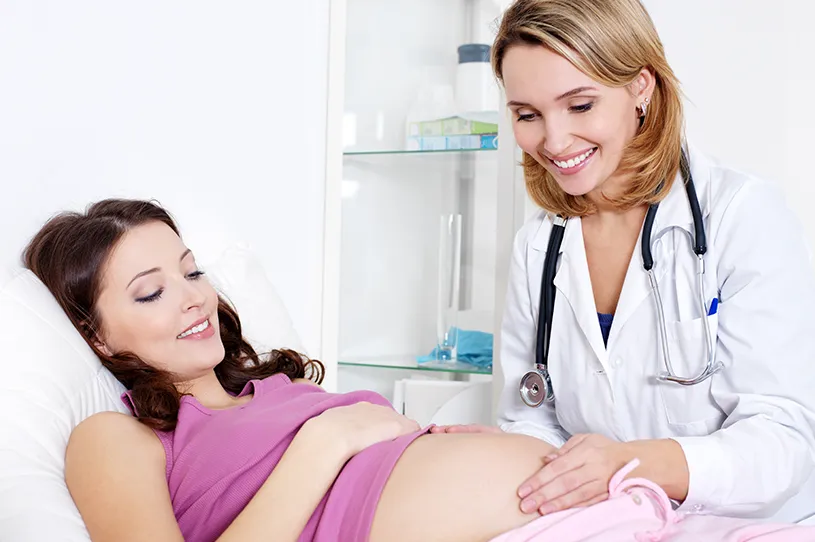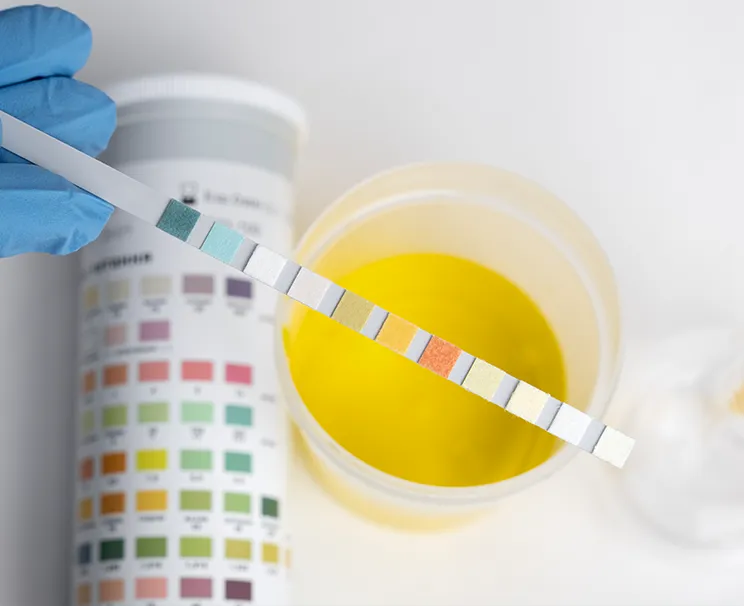Bone density is a parameter that measures the mineral content of bones in order to evaluate their strength and durability. This measurement generally plays an important role in the early diagnosis of diseases such as osteoporosis in certain age groups or in individuals with risk factors.
Bone density should be carefully monitored during advanced age and postmenopausal periods. In addition, it is of great importance to follow up regularly in individuals with a family history of osteoporosis or those undergoing long-term medication treatments. With this measurement, possible fracture risks can be identified, preventive measures can be taken, and when necessary, lifestyle changes or medical treatments can be planned. Regular check-ups are crucial for maintaining bone health and ensuring quality of life in older age.
Bone Mineral Density
Bone mineral density is one of the most important criteria that determine the hardness and strength of bones. This value shows how much calcium and other minerals are stored in the bone structure. Thanks to periodic check-ups, possible risks of bone loss or fractures can be detected earlier.
Bone mineral density measurement is especially important for postmenopausal women, elderly individuals, or those with a family history of osteoporosis. This test is used to monitor the mineral loss in bones over time. A decrease in density means an increased risk of fracture, while stable or high values indicate a healthy bone structure. Early measurements help maintain bone health through treatment and lifestyle changes.
Bone Mineral Density Measurement

Bone densitometry is an important diagnostic method used to determine the amount of minerals in bones. Especially for individuals in advanced age, in the postmenopausal period, or with a family history of bone loss, measurements made at regular intervals are of great importance. Thanks to this test, the risk of bone fracture, disease progression, and response to treatment can be easily monitored.
There are several risk factors that may cause weakening of the bone structure. These include aging, hormonal changes, insufficient calcium intake, sedentary lifestyle, and some chronic diseases. Bone health tests are recommended at regular intervals, especially for individuals with these risk factors.
One of the methods used in this measurement is the dual energy X-ray absorptiometry (DEXA) technique. This method works with low-dose X-rays and is considered quite safe.
Thanks to its high accuracy rate, the mineral density of bones can be evaluated with millimetric precision. The X-ray dose given during the test is lower than the amount of natural radiation encountered in daily life.
Bone loss testing is one of the gold standard methods, especially for the diagnosis of osteoporosis. This test helps to detect mineral loss in the bones at an early stage, reducing the risk of fractures. Based on the results, specialist physicians can create a personalized plan with drug therapy, nutritional recommendations, and exercise programs.
In this context, it is very important to evaluate bone density frequently, especially in the following groups:
- Individuals suspected of osteoporosis
- Postmenopausal women
- Individuals who have previously experienced fractures with low trauma
- Those with a family history of bone loss
With early diagnosis, it becomes possible to protect bone health.
How Is Bone Mineral Density Measured?
Among the methods used to assess bone health, bone density measurement has an important place. This procedure is usually performed with devices that use low-dose radiation and is completed practically.
The aim of the test is to reveal mineral levels in numerical values and determine fracture risk. This allows the physician to plan preventive measures and treatment approaches tailored to the patient.
The data obtained during the measurement are compared with international standards. In particular, the Z-score provides the opportunity to compare with individuals of the same age and gender group. This value shows whether the person’s bone structure is within the normal range or at a lower level. A negative trend in the Z-score indicates a decrease in bone density.
This evaluation is extremely important to identify disease risk at an early stage and to monitor the process routinely. Because bone loss often progresses silently and can result in fractures without showing symptoms.
The bone density measurement process proceeds step by step as follows:
As a result of these steps, the patient’s current condition is clearly revealed. In this way, not only the current density is evaluated, but also changes in the following years can be observed. Routine check-ups are also critical to see the response to treatment and the effect of lifestyle changes.
What Should Bone Density Be?
Bone density is an important indicator that measures the mineral content and strength of bones. Normal values may vary depending on the individual, age, and gender. Comparisons based on the standard value accepted in young adults provide guidance on whether bone health is preserved in later ages. This measurement is particularly significant for postmenopausal women and individuals at risk.
The question of how bone measurement is performed is often asked. Today, the most commonly used method for this purpose is the dual energy X-ray absorptiometry (DEXA) technique.
This method determines mineral density by sending very low doses of X-rays to the bones. DEXA stands out as a highly reliable and easy-to-apply method.

It is recommended that individuals with the following risk factors have regular measurements:
- Those with a family history of osteoporosis
- Individuals who have been on long-term corticosteroid or similar medications
- Thin and underweight individuals
- Women in the postmenopausal period
- People who have previously experienced bone fractures
Thanks to this measurement, osteoporosis can be detected at an early stage and the necessary precautions can be taken. In people whose bone mineral density is below normal, the process is aimed to be slowed down with lifestyle changes, calcium and vitamin D supplementation, or medical treatment. Early diagnosis helps reduce the risk of fractures in later years.
In short, regular check-ups are necessary to find out whether bone density is within the ideal range. This way, individuals can take the necessary steps in time to maintain a healthy life.
Frequently Asked Questions
Bone health values are evaluated through the T-score and Z-score. A T-score of -1 and above is considered normal. Between -1 and -2.5 indicates osteopenia, which means low bone mass, and -2.5 or below indicates osteoporosis. These values may vary by individual, so a physician’s evaluation is required for a definitive interpretation.
What should bone density be in women?
Bone density values in women vary depending on age. Especially after menopause, measurements should be done regularly because a significant decrease in density can be observed during this period.
A decrease may indicate problems such as osteopenia or osteoporosis. As it progresses, the risk of fractures increases and it can lead to limitations in daily life activities.
What happens if bone mineral density is too high?
Higher-than-normal density usually indicates a healthy bone structure. However, in some cases, excessive mineral accumulation in the bones may be associated with different metabolic diseases. Therefore, the results should be interpreted by a specialist physician.
An increase in density indicates that the bones are stronger and richer in minerals. However, excessively high values may also be a sign of certain metabolic disorders.
To increase density, it is important to exercise regularly, eat a diet rich in calcium and vitamin D, avoid smoking, and limit alcohol consumption. If necessary, the physician can also support bone health with medication.
In the early stages, osteoporosis usually does not cause symptoms. However, over time, loss of height, back pain, posture disorders, and easily occurring fractures can be counted among the first signs.
A balanced diet, adequate calcium and vitamin D intake, regular walking, or light weight exercises are the most effective ways to strengthen muscle and bone structure.
This test is usually performed with DEXA devices located in the radiology departments of hospitals or in private imaging centers.
The procedure is quite short; it is usually completed within 10–15 minutes. The patient does not make any special preparation and lies on the device during the measurement.
Bone density measurement should be performed regularly in postmenopausal women, individuals over the age of 50, those with a family history of osteoporosis, people who have experienced fractures with low trauma, and individuals at risk of bone loss. Measurements carried out in these groups are critical for early diagnosis and treatment.
No special preparation is needed for this test. The patient can be either fasting or full; it does not affect the result.
The price of bone measurement may vary depending on the type of device used, the city where the healthcare facility is located, and the scope of service. In general, fees determined in private centers may differ compared to public institutions.










